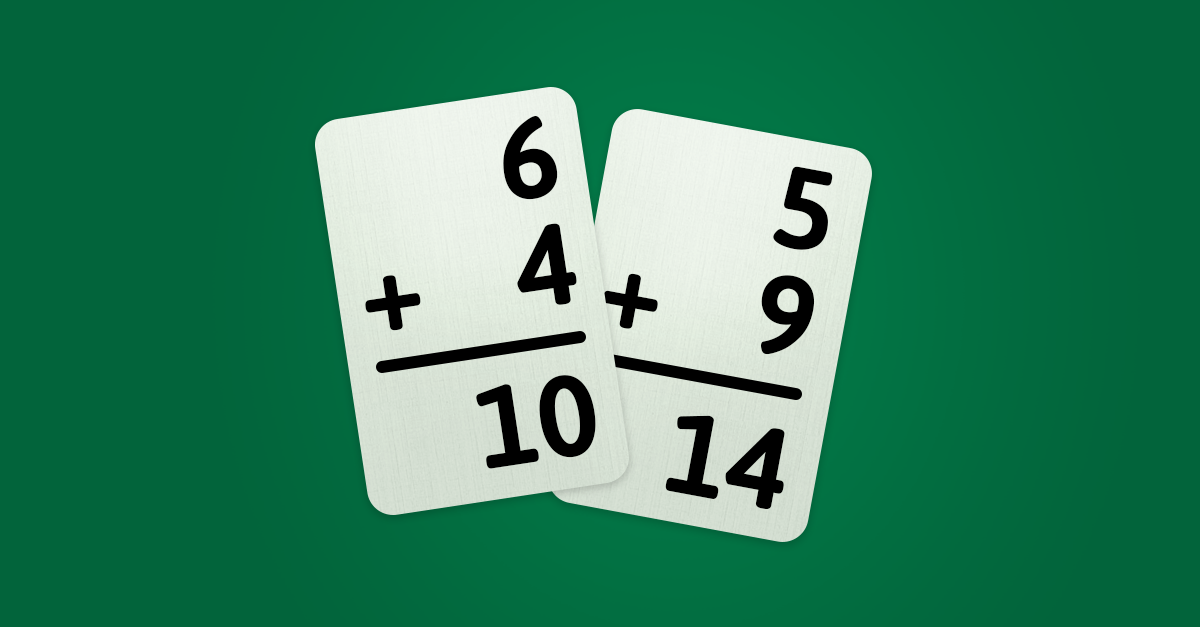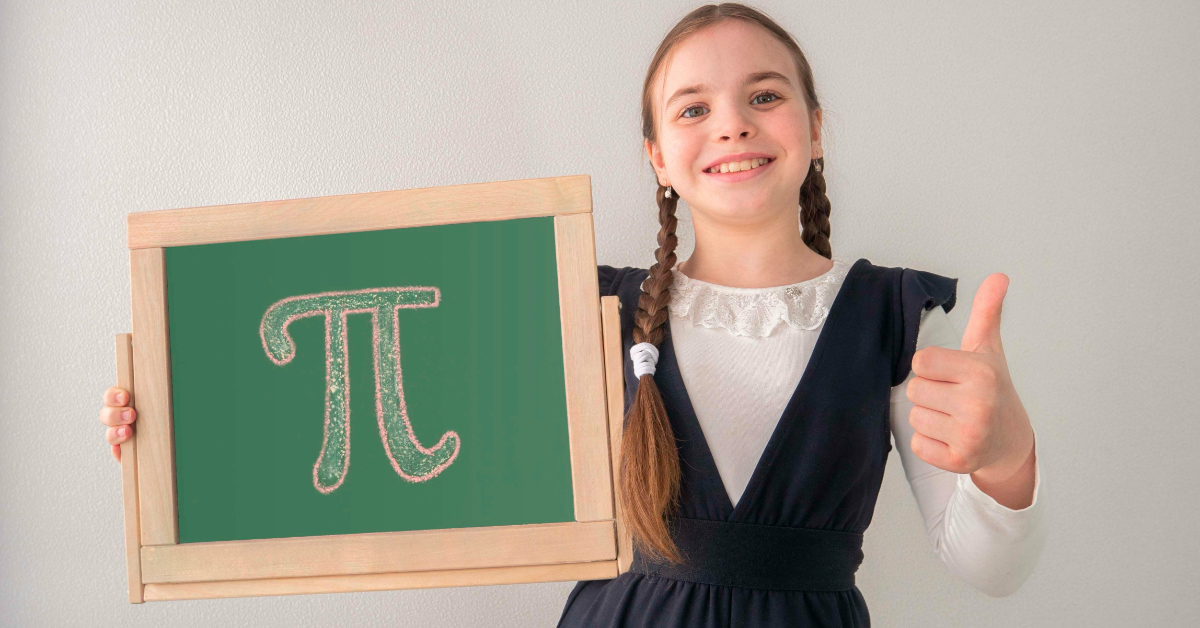
Visit any homeschool household and look for the “tools of our trade” as homeschool moms, and you are going to find math flash cards. They are probably the single most used tool in a homeschool mom’s tool belt, and I am about to tell you that you’re misusing them.
How I Used Flash Cards the Wrong Way
Yes, I am poster child for how to use flash cards the wrong way.
Allow me to paint a picture for you: I sit down with my child – usually across a table (already putting a physical barrier between us…) – and I hold up a flash card that shows 6 + 4. I say to my child, “Six plus four is…?” and expectantly grin.
My child dutifully says, “Six plus four equals ten.” I enthusiastically say, “Excellent!” And then I hold up a flash card that show 5 + 9, and my student hesitates; in a wink of an eye I say, in likely what sounds like a whiny voice, “Aw, come on! You knew this yesterday!!” and waggle the flash card at them.
Boom.
In a flash I have inadvertently and completely derailed the process I’m trying to accomplish. Has this ever happened in your home? Flash card learning is going along swimmingly, until you encounter one fact that your student stumbles on, and then, from that point forward, the whole thing descends into a rough deal.
The Problem With Flash Cards
What? What happened here? Quite by accident, I derailed my child’s learning train by introducing stress into the learning equation. Specifically, what happened to my child is that their learning was literally hijacked.
I have to give much credit to Dr. Karen Holinga for showing me what I was doing in error. Research tells us that when stress enters a learning situation, learning stops.
There’s nothing we can do to combat it because it is a physiological response to the perceived stress. Dr. Holinga calls it an amygdala hijack, which means that learning is temporarily interrupted until the stress dissipates. This biological cascade cannot be prevented. In the presence of stress, the amygdala, a small part of the brain, actually shuts learning down.
I was an ardent flash card proponent and used them in conjunction with other methods to help teach facts to my children. However, I must confess that my fictional scenario was not very fictional in my household. It happened – a lot. The minute my child perceived that I was less than happy with their performance and stress entered the equation, their learning stopped.
How to Use Flash Cards Better
So what would be an effective way to teach math facts without creating a stressful environment?
Remember, memorizing math facts is like reading without sounding out words. It makes the whole process of mathematics more doable. My colleagues and I share all sorts of ways to internalize those facts without the stress of flash cards.
Today I want to share with you two of my favorites:
With a younger child, purchase a beach ball; it needs to be at least 18 inches in diameter. Then take a permanent marker and write numbers all over the ball so that, as the ball is thrown and then caught with two hands, the child’s hands will be on two numbers. The game “number catch” goes something like this: toss the ball to your child, and where their two hands land, have them use those numbers in the corresponding math fact (example: “Six plus six equals twelve”) Then have them toss the ball back to you, and you do the same. This incorporates more than one sense, and keeps the learning fun.
With an older child, you can use a deck of cards to play “Fact War”. Split the deck in half equally between the two of you. You throw down a 6 and your child throws down a 7; 6 x 7 = 42. The first one to answer correctly wins that pile. You may need to grant grace in the beginning, but it won’t be long before they are really playing in earnest. Star with the face cards as ‘10’ – you can become more creative as their proficiency increases. Then Jacks can become 11, Kings can become 12, and so on.
Did I burn all of the flash cards at my house? Nope. In fact, they are all over the place. But I never ask more than three facts in a row and usually do it as my children are on the way to do something else. For example, my youngest says he is on his way out to the trampoline; I may say, “Ok, but answer me three first,” and ask him three random facts. He will laugh, answer, and then move on out the door!
The rest of the story?
All six of my children are proficient with their math facts, but, interestingly enough, my youngest, with whom I used the fewest flash cards, learned his facts the most quickly and seemed to be the most cheerful in the process. I don’t think it was a coincidence. I wish you a stress-free and joyful learning experience with your children, and I earnestly hope you don’t hijack the process with those flash cards!
We Are Here to Help
If you have questions about teaching math, we are here to help!
Get in Touch



I never used flash cards with my oldest who doesn’t even get math as a concept. None of it makes sense to him in the slightest. Now as we get closer and closer to being an adult I just focus on applied math skills and how I never want him to be in a situation that will put him at a true disadvantage. Like counting money, keeping a bank book, knowing enough about fractions that he can double a recipe. With that said my youngest and I do flash cards almost every day to the point he begs me to do them with him. He has a “math” brain and sees all things in an organizing fashion / how numbers relate to one another. The way we started wasn’t drilling it was relating so if he knew what six plus six was we would relate it to a problem he didn’t know right off the bat such as six plus seven. We would talk about what was different about the two equations and how could we apply it to the answer. This was great especially when we looked at double digits. It made it fun in a way and now he just wants me to time him. He is just one of those kids who sees the math in his mind and for the most part always has. It can be a challenge at times homeschooling, as my youngest seven years younger than my oldest has answered the oldest’s math problems faster since before we even began teaching him.
I think it would be cool to hang some of the ‘problem flashcards’ on a wall somewhere in the house. At the landing of the staircase, for instance. Then every time the child passes by she SEES it….or subconsciously picks it up. We don’t even have to mention anything about it. I bet the next time you sit down to do paperwork, that ‘problem number’ will be KNOWN.
Wow thanks. Going to do this with reading too. I get mad at me for making her feel like that cus I hated it. But didn’t know what else to do. Thanks
You are in very good company. Don’t be hard on yourself. We just want so much for our children to be successful. Our frustration in their performance is often our own anxiety of “are we doing this right”? If hindsight is anything, my advice would be to enjoy her, praise her at every opportunity and celebrate her successes. Keep those drill sessions brief — and be sure to scatter in the “easy-peasy lemon squeezie” ones so that she builds her own record of success. Blessings!
We are having trouble with multiplication. I have the flash cards and got some insight from above. Any other ideas.
Musical multiplication from Good and the Beautiful has worked wonders for my daughter who is still struggling with addition and subtraction facts.
Try multiplication songs.
We have a 12 year old who it’s absolutely very bad in math and she is refusing somewhat to use flash cards pre-testing at home working with the person shuts down when you are trying to talk to her about the importance or show her and we just don’t know how to reach out to her can you help
I’m a teacher and do use flashcards in a fun effective way. Drill quickly through the stack of cards. If child knows the answer, he/she gets the card on his/her pile. If not, then the card goes on my pile. First I show the card to child without the answer showing, and then I flip the card to show the answer to the child after they give their answer. When it is correct, I quickly place the card to their pile. When it is incorrect, I quickly recite the math fact and then put it on my pile. The idea is to quickly keep it moving. Next, I give my pile to the child and ask him/her to go through the cards reciting each one. Make a chart to document progress and give rewards as goals are met.
I use multiplication flashcards with my 10 year old every day, though she technically hasn’t started multiplication in math yet. (She’s bear the end of the M-U-S Beta book.) That said, she started memorizing skip counting up to 15×15 when she was 5 years old, thanks to Classical Conversations. She also regularly plays mental math games that include a variety of operations, including multiplication, division, and exponents. I have her multiplication flashcards divided up by family (e.g. the 1’s, the 2’s, etc.). They’re stored in a box that’s divided into three sections: “Mastered,” “Sort or Know,” and “Don’t Know Yet.” It was super empowering for her to breeze through all the 0’s, 1’s, 2’s, 10’s, and 11’s and sort them into mastered. We spend most of our time on the “sort of know” cards. We look for patterns or clues to help her quickly get to the factors in other families (e.g. for ‘x times 4,’ simply double the answer to ‘x times 2’). It’s still slow coming on the problems she doesn’t know, but again, she hasn’t even technically started multiplication yet, so I’m extremely hopeful it will come to her quickly when she does.
I love these ideas! Thank you so much for sharing! 😊